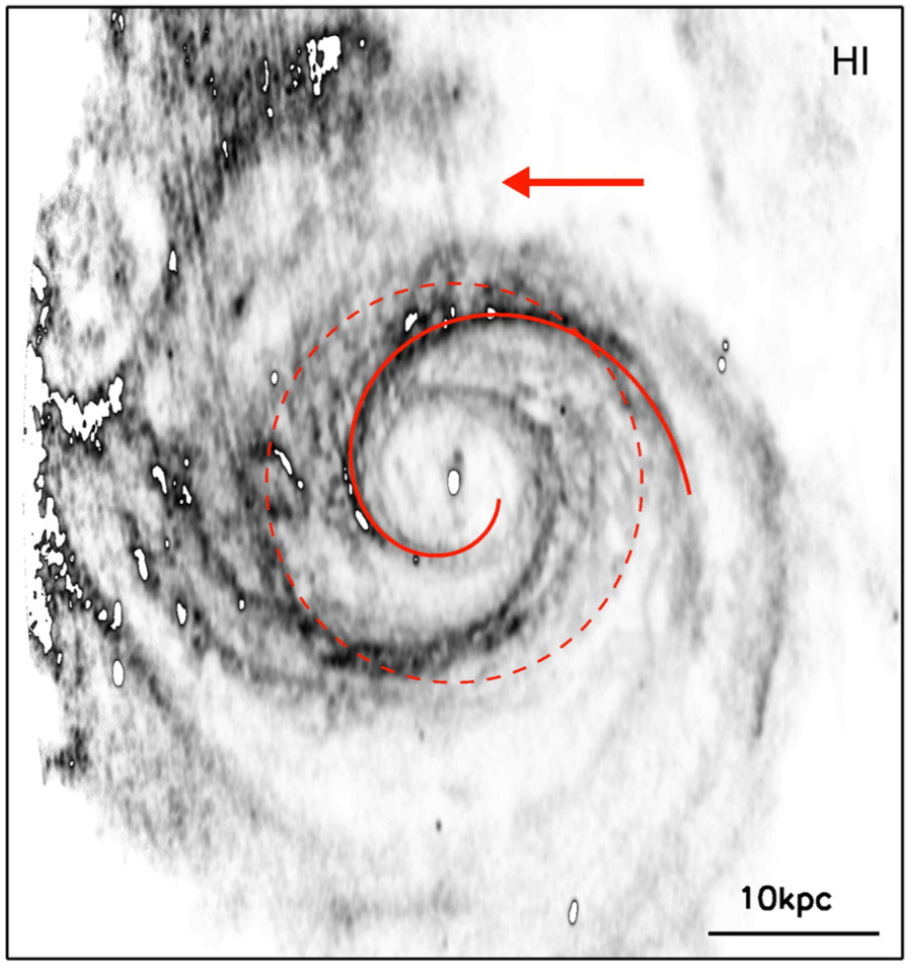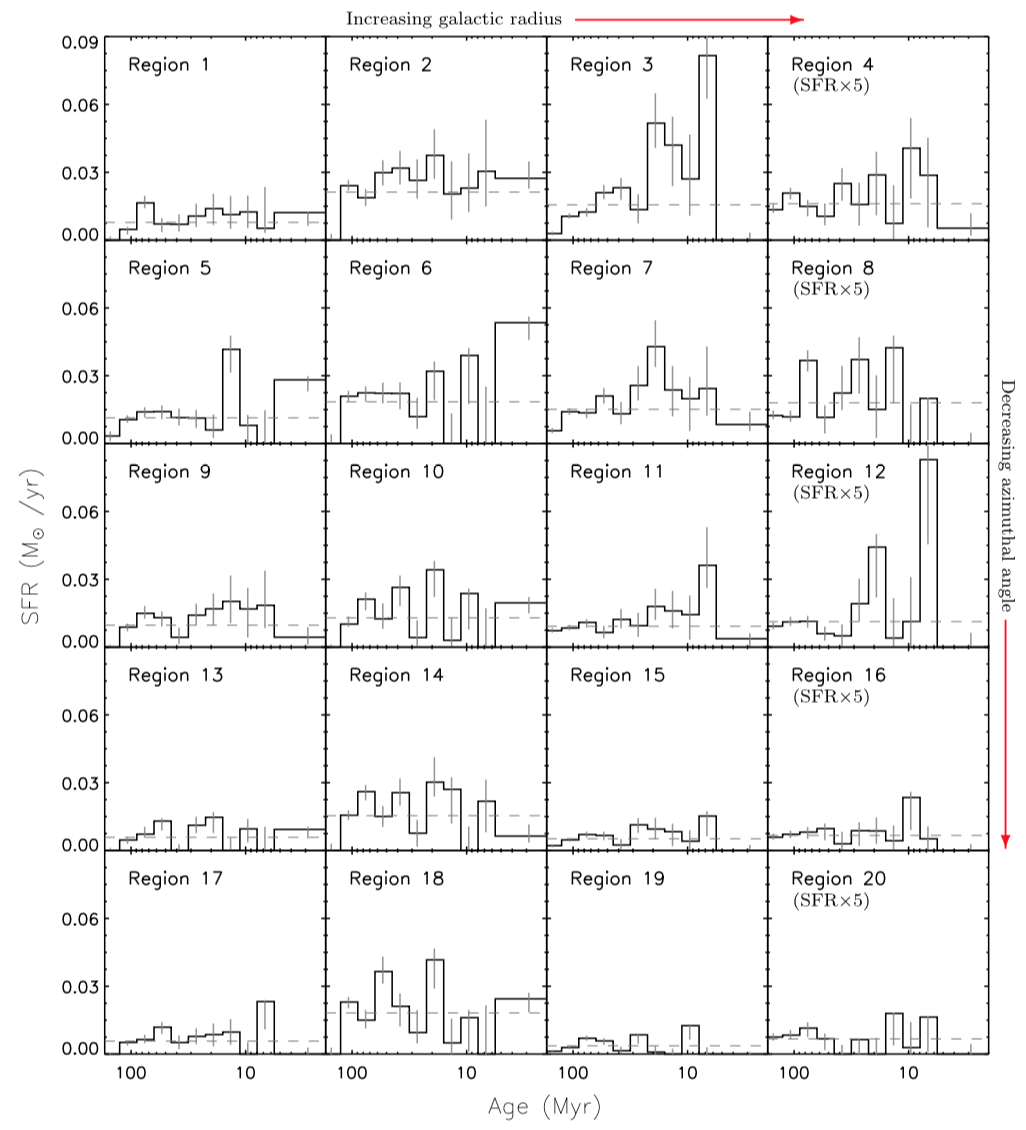Star Formation History

Inidvidual stars in a galaxy retain a fossil record of the formation and evolution of the galaxy. Thus, recoverying its full star formation history (SFH) is a very powerful tool to study the mass assembly and chemical enrichment histories of the galaxy over time. By examining the SFHs of particular galactic structures, it is also possible to study the origin of those particular structures.
In Choi et al. 2015, we used massive young stars to test the stationary density wave theory, which is one of the most widely accepted models for the origin of spiral structure. In this model, one assumes that density waves are propagating through a galactic disk with a constant angular pattern speed. When atomic or diffuse gas enters into a spiral arm (i.e., falling into a spiral potential well), it experiences a shock. The resulting compression naturally leads to the formation of molecular clouds, enhancing star formation. Newly formed stars disperse the surrounding molecular clouds through stellar feedback and continue to move away from the spiral arm. The resulting signature of this process is a spatial sequence of cold molecular gas, obscured star formation, massive young OB stars, and evolved stars from the upstream to the downstream (Roberts 1969). Thus, within spiral arms that are supported by quasi-static density waves, one should be able to see a systematic age gradient across the spiral arms.

To test the stationary density wave theory, we chose a nearby spiral galaxy M81 having two coherent grand-design spiral arms. We derived the spatially resolved recent star formation histories across one of M81’s spiral arms. Then, We compared the derived star formation histories with the predicted star formation propagation by the density wave theory. We found no evidence for spiral wave propagation, and thus no evidence that the grand-design spiral structure in M81 is supported by the stationary density waves. Instead, we concluded that the resulting star formation histories are stochastic, which is consistent with a tidally induced kinematic density wave due to the recent interactions with its companion galaxies (M82 and NGC 3077).
In addition to the SFH in M81, I was also involved some of the M31 SFH projects using the PHAT data (Lewis et al. 2015, Williams et al. 2017).